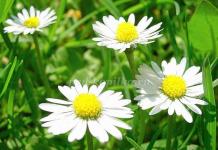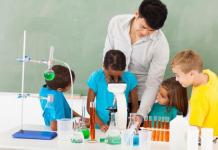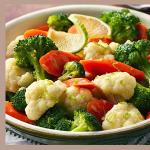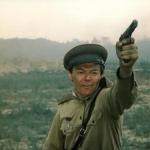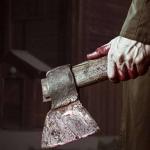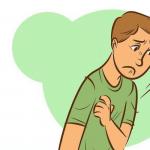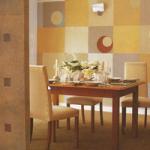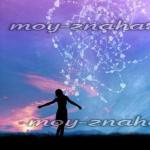A walk takes a significant amount of time in the daily routine of preschool children and is of great pedagogical importance. The main thing is to make sure that the walk is not boring. If the walks are meaningful and interesting, children, as a rule, go for a walk with great willingness and joy.
Download:
Preview:
Outline of the target walk
"Winter in the Kindergarten"
in the middle group
Program content:to develop children's interest and love for their native nature, to acquaint them with the first signs of winter, to consolidate the ability to observe natural phenomena and establish the simplest connections between them.
Equipment and materials: food for a bird feeder, attributes for an outdoor game: hats for Frosts.
Progress of the walk
Educator. Guys, why is the site completely different today? What is the weather today? How is it different from autumn?(Children's answers.) Listen to the riddle:
In the morning I looked a little light:
The yard is dressed in winter.
I flung open the doors,
I look into the garden, I can’t believe my eyes.
Hey! Look, miracles
The heavens have fallen!
There was a cloud above us
It turned out to be underfoot.
A. Gunali
What season is the riddle about? That's right, guys, about winter. Listen to a poem about winter.
White snow fluffy
Spinning in the air
And the earth is quiet
Falling, laying down.
And in the morning with snow
The field is white
Like a veil
All dressed him up.
Dark forest with a hat
Covered up wonderful
And fell asleep under her
Strong, unshakable...
I. Surikov
“A beautiful poem, isn't it? Let's take a closer look at the first white snowflakes as they swirl, slowly sinking to the ground. Let's compete to see who gets the most snowflakes on their mittens!
If you catch a snowflake in the palm of your hand, what will happen?(Children are convinced that snowflakes melt quickly).This is because snow is made up of water. In autumn, instead of snow, it rains, and in winter, from frost, the raindrops freeze and turn into snowflakes.
Now try with your palm, what kind of snow does it feel like? That's right, cold.
But for the earth and plants, snow is a real warm blanket. The more snow in winter, the warmer the grasses and shrubs. Snow protects them from severe frosts and balls. Let's see how plants sleep under a white fluffy blanket.(The teacher carefully rakes the snow to the ground and shows the children green blades of grass.)And when spring comes, the snow will melt, and the grass will turn green and grow again.
Let's go ahead and see what happened to our trees. Do they have leaves?(Children's answers.) That's right, guys, the trees are bare, there is not a single leaf. Tell me, is there a tree that does not change its outfit in autumn and winter?
in winter and summer in one color.
- What is this? That's right, tree. All winter the Christmas tree is green, it is not afraid of frost, instead of leaves it has beautiful green needles. Very soon the green Christmas tree will come to us for the holiday. Guess which one? That's right, in winter, all people celebrate the New Year.
Approach the mountain ash and see what happened to it. There are many beautiful, red berries on the mountain ash. In winter, from frost, these berries become very tasty. Birds peck at them with pleasure. And here is our feeder. Let's put food in it, the birds will fly and thank us for it. Remember why birds need to be fed in winter.(Answers of children).
And now let's play the Russian folk game "Two Frosts".(The game is previously learned in a group).
Game "Two Frosts"
The teacher, together with the children, chooses two Frosts.
Frosts: We are two young brothers
Two Frosts are removed.
I am Frost-Red Nose.
I am Frost - blue nose,
Which one of you decides
To go on a path?
Children (together with the teacher):
We don't care about the cold!
We are not afraid of the cold!
You Frosts, do not yawn,
Catch up with us faster!
Frosts catch up with children, take them to the Ice House ( to the veranda ). The game is repeated.
At the end of the walk, the teacher, together with the children, concludes that winter has come, it has become even colder in winter than in autumn. Leaves fell from the trees, snow fell.
Preview:
Synopsis of a developmental walk in the senior group
"Winter is covered with snow..."
Goals:
educational: to give children an idea of snow as one of the states of water, the expansion and deepening of knowledge and ideas of pupils about the world around them; to acquaint with the water cycle in nature, to form elements of scientific knowledge of the world.
Developing: promote the development of observation, cultivate curiosity.
Progress of the walk
Labor activity
At the site, the teacher offers the children to clean the paths from snow.
Warm up
Children stand in a circle, and one after another they offer to perform physical exercises.
Mystery
"White, patterned,
little asterisk,
You fly into my hand
Sit for a minute.
An asterisk circled
A little in the air.
Sat and melted
On my palm."
(Snowflake )
snow watching
Target. To expand children's knowledge about the water cycle in nature.
A lot of snowflakes are snow. Snow is everywhere. Draw the children's attention to the snow cover. Go around the site and consider how beautifully the snow covered familiar places. Ask what lies on the fence, the roof of the veranda? ( Snow)
What snow? (white, cold, sparkling, fluffy, wet, etc.)
Ask the children where the snow comes from. Explain that rain comes from rain clouds in summer. Now it is winter outside, there are no rain clouds, the weather is cold, frosty. In the clouds, steam and small droplets of water freeze and turn into snowflakes; they fall to the ground, forming snowdrifts.
On a calm day, snowflakes fall slowly, you can see their shape when the wind blows, snowflakes fly in solid dust, hitting each other and other objects. Their rays break off, lose their beautiful shape. In severe frost with a clear sky, crystals in the form of needles fall out.
problem question: snow is white, is it possible to say that it is clean?
Invite the children to build a snowman. Get it or not. Why?
Experiments with snow
1. Offer to catch a snowflake on a mitten, examine it. Pay attention to the beauty of snowflakes, to the fact that they are not similar to each other. Tell me what kind of snowflake? (light, fluffy, carved, beautiful). Invite the children to remember what a snowflake looks like in order to draw it from memory in a group.
2. Catch a snowflake in the palm of your hand. What happened? (the palm is warm and the snowflake has melted, turned into a drop of water).
Conclusion: Snow is solid water.
Folk omens
2. Snow sticks to trees - to heat.
3. The snow creaks strongly under your feet, and voices are heard far away - to be colder.
4. Sparrows hide in shelters, under the roof - in frost or blizzard.
Didactic game“Name the extra word and explain your choice”
Rain, dew, ice, fog.
Ice, fog, snow, frost.
Athletes game. Children stand in a circle. The teacher with the ball stands in the center of the circle. He starts a sentence and throws the ball to one of the children. The child catches the ball, completes the sentence and returns the ball to the teacher. For example: “An athlete who skis is (a skier). An athlete who skis - (skier).
Vocabulary: figure skater - figure skater, luger - luger, biathlete - biathlete.
Mobile game "Frost Red Nose"
Two houses are marked on opposite sides of the site, players are located in one of them. In the middle of the site stands Frost Red Nose.
Jack Frost:
I'm Frost Red Nose.
Which one of you decides
To go on a path?
Children:
We are not afraid of threats.
And we are not afraid of frost.
After that, they run across the playground to another house,
Frost catches up and tries to freeze (salt) them. Frozen ones remain in place and stay that way until the end of the dash. Frost counts how many players managed to freeze.
When the game is repeated, a new Frost is selected, and he already salutes the players at the end, the results are summed up
which Frost (old or new player) froze more.
Breathing exercise."Blow on the snowflake"
We stretch our palm in one direction or the other, catch snowflakes in the palm of our hand and blow them away.
Preview:
Winter walk in the preparatory group
Tasks:
- continue to acquaint children with the properties of snow;
- consolidate knowledge of animate and inanimate nature;
- develop the ability to see beauty in winter nature;
- teach children to work;
- teaching children how to play hockey
- teach children to follow the rules of the game;
- cultivate kindness towards each other
Material:
- sticks, puck;
- shoulder blades;
- ice cubes;
- two bottles of water
Walk progress:
Guys, we were walking with you now and snow crunched under our feet, remember why? (Answers of children). Why do you think it crunched louder and louder in frosty weather than today? (Answers of children). Guys, snowflakes in frost harden strongly and become brittle and brittle, and in warm weather they are more plastic, so in frosty weather the snow crunches louder.
Listen to the poem "Snowflake"
Timid, disturbed by a fluff
A snowflake is falling over the city.
Below, below - around, straight, crooked,
Oh, and how beautiful she is!
I admire and do not dare to pass -
I don't know what to do with her:
Here she is, this very minute,
Fall under someone's boots.
I reach out to her with a good hand:
Nobody will touch you!
In the palm of your hand - how long until trouble! -
A tiny drop of water.
I wanted to save you snowflake
And I carry your teardrop in my hand.
Tell me what happened to the snowflake? (Answers of children). Is a snowflake living or not living nature? (Answers of children). Guys, when we studied the poem “Winter the Dressmaker”, I told you why plants need snow, remember? (Answers of children). That's right, they don't freeze. Look, I have two identical jars of water. Let's bury one jar in the snow, and put the other on top and see where the water freezes faster.
Well, for now, let's play. What game will we play - "Tea, tea help out", "Cossacks - robbers" or "Baba Yaga"? (Children choose their own game and play).
Guys, look how much snow fell today, the plants are fine, but we can’t ride down the hill. Let's clean it up and let's ride. (Children are cleaning the slide, the teacher is the site).
After the children have cleared the slide, they are engaged in independent activities (games at the request of the children). The teacher conducts individual work with the boys - teaching the game of "Hockey".
At the end of the walk, the teacher:
Guys, let's see what happened to our water during the walk. Let's open the bottle that was on top of the snow, see what happened to the water? (Answers of children). Yes, she began to turn into ice, began to freeze. Let's get a bottle out from under the snow, look here, how the water was, and remains. So, the snow really covers the plants from the cold.
Abstract number 1.
Subject: "Cold winter"
Purpose: to form in children the first coherent ideas about this season.
Walk progress:
Organizing time.
observation.
During a walk, the teacher draws the attention of children to the clothes of passers-by: “See? Grandfather is wearing felt boots and a fur hat. He dressed warmly so that the cold would not chill him. Here it is, winter-winter, fierce cold! But the boy runs, jumps up so that it is not cold. The birds hid from the cold. No one is visible, everyone was dispersed by the cold winter. Only one wind walks. Listen to him sing: "V-v-v! V-v-v!" Repeat how the angry winter wind sings and howls. .
The teacher asks to check what kind of snow it is today. Children take shovels, collect snow, throw it up. The snow is scattered in a light cloud. The teacher specifies: "Loose" . You can’t sculpt - everyone decides and agrees to make a snow hill.
Work. Everyone approaches the snow bank and decides where it is better to build a slide: far or close to the veranda, above or below the snow bank - and they start "work" .
The teacher cuts a hill out of the snow (height 40-60 cm). Children help: they clean the edges, shovel snow, trim the slope.
As soon as the construction is completed, everyone takes the inventory to the place, collecting buckets, shovels, shaking them off the snow.
Independent activity of children.
The kids start rolling dolls down the hill. The elder decorates its edges with colored ice (patterns, flowers) along with an adult.
mobile game "Father Frost" .
Abstract number 2.
Subject: "Snowfall" .
Purpose: to introduce children to a seasonal phenomenon - snowfall.
Walk progress:
Organizing time.
During the gathering for a walk, the teacher says to the children: “Pay attention to your clothes. We all dress warmly, because it is very cold, frosty, winter outside.
observation.
Children go for a walk and see that it is snowing. "Snow! It is snowing!" - they tell the teacher. "Right! - says the teacher. - Snowing. There was a lot of snow all around. Look, the snow is already on the path, and on the bench, and on the table. And he keeps falling and falling. It's snowing!" Children repeat: "Snowfall!"
The teacher continues: “Snowflakes swirl slowly in the air. They circle and sit down, who goes where. Are they sitting on us?" Children carefully examine themselves: “And I sat on my felt boots! And on my mitten!”
"Look like an asterisk!" - the teacher says and offers to look at the beautiful snowflake that has fallen on the sleeve. The teacher offers to put his hand towards the falling snow, and when a large snowflake falls on the mitten, blow on it. “Flies? Let it fly on! The snowflake is light, fluffy, beautiful!”
Then he takes off his mitten and invites the children to watch what happens to the snowflake. Explains: “A snowflake sat on her hand and melted. It was, and now it's gone! What a little star .
By preparing children's perceptions for the bright characteristics of a snowflake (asterisk, baby, melted in the palm of your hand), an adult reads a poem 3. Christmas "Little Star" , repeating its ending twice:
Sat and melted on my palm.
Children repeat: "The snowflake is light, fluffy, beautiful, like an asterisk" . “What color is she? - asks the teacher. - And who has a fur coat of the same white color? So we also have fluffy snowflakes! Blow on them. Let our white fluffy snowflakes fly!”
After that, the adult says: “What a snowfall! A lot of snow piled up, everything fell asleep all around. Zimushka-winter tries, wraps the bushes with snow, puts on a hat on the Christmas tree. Look, what color is winter-winter? Children say: winter is white.
Mobile game.
After completing the observation, the children play an outdoor game "Snow is spinning" .
Work. After some time, the teacher offers those who wish to clear the area in front of the veranda from freshly fallen snow. Children choose shovels or engines at will and, together with adults, remove the snow: some move the snow to the snow bank, others throw it up (teacher shows actions). Then, if desired, you can sweep the site.
Independent artistic activity of pupils.
Having finished clearing the site, the children can decorate it together with the teacher, placing multi-colored flags along the snow shaft, laying out multi-colored ribbons between them, laying out patterns of multi-colored ice floes along the slope. The teacher praises them, thanks for their diligence.
Some children play, others watch the actions of their comrades. The teacher can turn to a subgroup of 3-5 children and, holding out his hand towards the falling snow, offer to guess: “White, fluffy, fell on my hand and disappeared. What it is? Guessed?
The walk continues.
Abstract number 3
Subject: "Bird Behavior in Winter"
Purpose: to form in children a desire to take care of wintering birds; learn to recognize birds, name their body parts.
Walk progress:
Organizing time.
During the gathering for a walk, the teacher says to the children: “Pay attention to your clothes. We all dress warmly, because it is very cold, frosty, winter outside.
observation.
Children go for a walk. The teacher draws their attention to wintering birds and tells them that they are hungry in winter: there are no midges, worms, only people can help - feed them.
Children repeat after adults: "Hello little birds! Have you come to visit us? Now we will treat you!” The teacher invites them to see how the birds will treat themselves, explains: the food should be scattered on the path so that the birds can see it, and move away and watch it themselves.
The teacher asks: “Who is so brave? Who flew first? Of course, a sparrow: jumping, pecking. Here come the sparrows. What do they eat grains with? Beak, not nose. The beak is sharp. They peck and fly to a new place in a flock. How do they communicate? Listen. Tweet? We are glad that we treat them, probably thank us. Here come the other birds.” .
Children answer questions: what are the names of birds, what color are the feathers and legs of a dove, who has a larger beak - a dove or a sparrow.
Birds are shy. A little something - flutter and fly away. The teacher says: “Don't be afraid of us, we won't hurt you. Right? We are kind people. Tell them guys" .
And now the noise and din began - these were sparrows fighting over crumbs. What brawlers! They made a noise and everyone flew away. The teacher turns to the children, invites them to find different birds on the site (dummy). Children examine a crow, a magpie, note their plumage, show their beak, tail, paws, wings.
If possible, you can see the traces of bird feet in the snow where the birds were feeding. Large footprints are pigeons, small footprints are sparrows. Children imitate the movements of birds, their voices. Then the teacher offers to solve the riddle:
I'm sitting on a bitch
Kar! Kar!
- I scream.
Chick-chirp!
Jump off the branch.
Peck, don't be shy!
Who is this?
Children answer who is chirping, who is babbling, who is croaking.
The teacher offers the children to build a bird feeder to pour food into it every day, take care of the birds: "Who wants to help?"
Everyone together takes shovels, goes to a quiet corner of the site and, together with the teacher, cuts a cube out of the snow. The teacher teaches children to hold the shoulder blades correctly, when they all throw snow aside, clean the edges of the feeder. Children watch his actions, listen to explanations: “So that the wind does not blow away the crumbs, you need to make a side, like this!” After the construction is completed, everyone takes the shoulder blades to their place.
Mobile game.
The teacher offers to play the game "Dog and Sparrows" .
Independent activity.
After the game, the children move on to independent activities. The younger students go sledding down the hill. Senior pupils play hockey on the rink.
Abstract number 4
Subject: "Helpers"
Purpose: to instill in children respect for the work of adults, to form a desire to help others.
Walk progress:
The children went for a walk, looked around - winter-winter had covered high snowdrifts all around, they couldn’t get through, they couldn’t pass. Snow needs to be removed, otherwise it is difficult for people to walk, you can’t carry a stroller with a baby, cars slip.
Suddenly, everyone hears the sound of an engine approaching. A snowplow is moving along the sidewalk. She drove, and immediately it became cleaner, because her brushes are wide - the entire width of the sidewalk. Children are waiting for the car to turn around and go back, again watching her work. The driver sits in the cab, carefully looks around, drives the car smoothly. The brushes are spinning, brushing the snow off the sidewalk.
A janitor with a wide shovel comes out into the yard. He cleans the snow along the edges of the sidewalk, throws it aside. The teacher invites the children to help the janitor.
Work. Children dismantle shovels, begin to remove snow at the entrance to the orphanage. The janitor saw, approached, thanks for the help. He shows them how to properly hold a shovel, where to throw snow.
The guys return to the site, where they are met by a large crow (toy). The teacher offers to play the game "Crow and Dog" .
The walk ends.
Abstract number 5
Subject: "The Snow Maiden is visiting us"
Purpose: to introduce children to a birch, a Christmas tree, with their distinctive external features; exercise in spatial orientation.
Walk progress:
Organizing time.
During the gathering for a walk, the teacher says to the children: “Pay attention to your clothes. We all dress warmly, because it is very cold, frosty, winter outside.
observation.
The fluffy greenery of the Christmas tree stands out against the background of snow. The teacher addresses the children: “Look, all the trees, bushes are bare, one Christmas tree is turning green, showing off. She came to visit us on New Year's Eve. Remember? How was she decorated? Look at her prickly needles, touch with your palm! How does the tree smell? (He slightly crushes Christmas tree needles in his hands and gives the children a sniff.) Like? The tree is fluffy. Its branches are called paws, they are thick, green. The Christmas tree is beautiful, the children love it!” Children repeat these words. Everyone notes that winter loves the Christmas tree, wraps it in snowdrifts. High snowdrifts, the Christmas tree is barely visible.
Then the teacher draws the attention of the children to the white birch trunk, invites them to hug, stroke the birch, feel its smooth, silky surface and specifies: a white birch. Children wrap their arms around the birch, decide which trunk it has: thick or thin. Then they find other birch trees on the site, note which one is the thickest (two clasp the trunk), the tallest.
Outdoor games.
An outdoor game is being held "Running" in order to clarify the names of the trees. “One, two, three - find the tree!” Everyone runs from tree to tree, waiting for the next command: "One, two, three - run to the birch!" The teacher asks how the children knew that it was a birch (Christmas tree); explains that trees and bushes must be treated with care, not to break their branches.
Running around the site, the children notice the Snow Maiden on the path (the teacher imperceptibly exposes a large Snow Maiden doll). Children rejoice, examine her outfit in detail, remember the New Year holiday, and then begin to build her a house (cutting a cube out of a snow bank), decorate it with multi-colored ice floes, all the time they turn to the Snow Maiden: "Do you like the house? Now you won’t leave us for the forest?”
Independent games.
After the construction is completed, the children begin to play with the Snow Maiden: carry on sleds, show their site, talk about the purpose of the structures. Then everyone goes to free play.
At the end of the walk there is a game "Goat horned" .
Purpose: development of speech, motor skills, coordination of movements.
Walk in the summer in the senior group. Abstracts
Abstract of the guidance of children's activities in the morning on a walk in the summer for a week in the older group.
Author: Borodina Tatyana Gennadievna, teacher of the senior group of GBOU secondary school No. 289 (kindergarten No. 1867) of the city of Moscow.I bring to your attention a summary of the management of children's activities in the morning for a walk in the summer. This summary will be useful in the work of teachers of older age groups of kindergarten.
Target: organize the practical activities of children in nature through observations, labor in nature and games.
Tasks:
- To develop observation and curiosity in children.
- To form ideas about the world around, the ability to behave correctly in nature, the desire to study and protect nature;
- To cultivate a careful and caring attitude towards nature.
- Activate the independent activity of children;
- Provide physical activity of children in the process of games and individual work.
1. Observation of chamomile.

Read a poem about chamomile to the children.
Chamomile bloomed in the garden
white shirt,
Petals one and two...
All carved lace.
Nastya ran to the kindergarten
And I saw a daisy
And she clapped her hands:
"Oh, he's good!
This white flower
We will transplant into a pot."
Mom kindly said:
"There's not enough room in the pot.
Let chamomile grow in the garden
white shirt,
Here is the sun and water,
Let her bloom in the garden!"
(L. Nekrasova)
Invite children to find a chamomile among other plants and describe its appearance: stem, leaves, petals.
Consider chamomile with children: the color of the stem, leaves, petals, core, flower shape.
Purpose: To expand children's knowledge about chamomile and its beneficial properties.
Questions for children: - How to find a camomile among other flowers?
What shape and color are chamomile petals?
What are the health benefits of chamomile?
2. Labor in nature.
Water the plants in the flower garden. Loosen the ground. Remove weeds.
3. Individual work with children.
Teach girls to throw a shuttlecock to each other with a racket. Throw a shuttlecock over you with a racket.
Purpose: To develop movements in the game.
4. Games with children.
Didactic games: "The fourth extra", "Make a group."
Purpose: To develop the speech of children, to accumulate a dictionary.
Role-playing game: "Shop"
Purpose: To clarify children's knowledge about store employees, about customers, about the importance of goods for everyday demand.
Outdoor games: "Ball in the center", "Run away, catch up", "Talking with a ball", "Talking with tails".
Purpose: To develop movements in the game. Learn to play with the ball on a signal.
1. Observation of insects (bumblebee).

Taking off on your flight
It buzzes like an airplane!
Flying over the fields
Over fragrant flowers
Collects pollen from them
And carries her to the porch.
Quickly crawls into a mink
And it's quiet for a while...
Who is this strange beast?
This is our furry...
Watch how beautifully, buzzing, a bumblebee flutters over flowers.
Offer to consider the appearance of the bumblebee, body parts, find out what it eats, what benefits it brings to plants.
Tell the children that a bumblebee, flying from flower to flower, carries pollen.
Ask the children a riddle:
On a flower, buzzing, sits down,
To enjoy the nectar
He is furry, like a spruce,
Looks like a bee...
Purpose: To expand children's knowledge about the appearance of the bumblebee and its meaning.
Questions for children: - Who will describe the appearance of a bumblebee to me?
- What benefits does the bumblebee bring to plants?
What does a bumblebee do as it flies from flower to flower?
The observation is carried out in groups.
After observing, I conduct a conversation about the benefits of insects in nature.
2. Labor in nature.
3. Individual work with children: "Classics"
Purpose: To train children in the long jump.
Continue to teach children to navigate among the numbers.
Methods and techniques: demonstration, individual assistance, positive evaluation.
4. Games with children.
Outdoor games: "Tag", "Hide and Seek", "Catching", "Day-Night", "Homeless Hare", "Mousetrap".
Purpose: To improve the running of children. Develop attention, speed, agility.
1. Watching butterflies.

Read the poem about the butterfly to the children.
I'm at the yellow butterfly
Quietly asked:
Butterfly, tell me
Who colored you?
Maybe it's buttercup?
Maybe a dandelion?
Maybe yellow paint
That neighbor boy?
Or is it the sun
After winter boredom?
Who colored you?
Butterfly, tell me!
The butterfly whispered
Dressed in gold
- Colored me all over
Summer, summer, summer!
Watch how beautifully, inaudibly, butterflies flutter over the flowers.
Offer to consider the appearance of butterflies, body parts, find out what they eat.
Lead the children to the conclusion that butterflies differ in size and color of wings.
Ask the children a riddle:
Above the flower flutters, dances,
Waving a patterned fan ...
Butterflies have 2 pairs of wings. They are covered with colored scales. The scales are very delicate and are erased with a light touch.
Butterflies have 6 legs with which they hold on to flowers and move along them.
They have antennae and a proboscis, coiled. Sitting on a flower, the butterfly deploys its proboscis, lowers it inside the flower and drinks nectar.
Tell the children that butterflies fly from flower to flower, so they carry pollen. Pollinated plants will have more seeds.
Make riddles about butterflies for children:
All four petals moved at the flower.
I wanted to tear it off, it fluttered and flew away.
Not a bird, but with wings:
Flying over flowers
Collects nectar.
Purpose: To expand children's knowledge about the appearance of a butterfly and its meaning.
Questions for children:
How many pairs of wings do butterflies have?
What are butterfly wings covered with?
What does a butterfly do when it flies from flower to flower?
The observation is carried out in groups.
2. Labor in nature.
Water the plants in the flower garden.
- Guys, our plants have completely lowered their heads, they probably need to be watered, what do you think?
Purpose: To cultivate a careful and caring attitude towards plants.
3. Individual work with children: "Counting within 10"
Goal: Continue learning to count to 10 and back.
Tell a poem for arithmetic:
On Tanya's sofa
Toys lie in a pile:
Five nesting dolls, Pinocchio,
And cheerful Cipollino.
Help Tanya
Count the toys.
4. Games with children.
Didactic games: "Make a group", "Geometric shapes".
Purpose: To develop the mathematical abilities of children.
Role-playing game: "Zoo"
Purpose: To introduce children to zoo workers. Give new information about the life of animals.
Outdoor games: "Ball to the neighbor", "Ball in the center", "Catch-up", "Fifteen".
Purpose: To improve children's running, speed, agility.
Psychological game "Magic Circle"
Purpose: To teach children to compliment each other. Cultivate a sense of friendship and teamwork.
1. Watching the crows.

Read poems about ravens to children:
High on a maple tree
The crow was preparing to sing
Showed a singing gift
Shouted loudly "kar-rr-rr".
Watch the crows with the children, see how they fly.
Feed the crows with the children, and watch this process from afar.
Offer to consider the raven: body parts, appearance, coloring.
Consider a crow's feather with children.
Tell the children a riddle about crows:
Two chatty neighbors
The conversation was on a thread.
Very Important Persons
These black ... (ravens).
T. Lavrova.
Purpose: To expand the knowledge of children about birds of the corvid family.
Questions for children: - What do crows eat?
- What does a crow look like?
What kind of feather does a crow have?
- Why are crows useful?
Observations are carried out in groups.
2. Labor in nature.
Invite children to collect garbage (sticks, branches, pieces of paper) on the site.
Methods and techniques: display, explanation, reminder, evaluation.
Purpose: To educate children in respect for nature. Involve children in cleaning the kindergarten and caring for the environment.

Purpose: To teach children in subgroups (4 people each) toss a medium-sized ball over themselves and catch it with both hands.
Continue to teach children (another subgroup of children - 4 people) hit the ball on the ground with the left hand and reinforce hitting the ball on the ground with the right hand.
4. Games with children.
Didactic games "" Sound loto "," Fold the word ".
Goal: Accumulate children's vocabulary. Develop speech.
Role-playing game "Hospital".
Purpose: To introduce children to hospital workers. Give new information about people who save the lives of the sick, fight for their lives.
Help children assign roles and provide the necessary equipment.
Outdoor games: "Fox and hares", "Third extra".
Purpose: To train children in running in a circle. Cultivate a sense of friendship. Develop attention, dexterity, speed.
1. Observation of the sun.
Read a poem about the sun to the children:
The cloud hides behind the forest,
The sun is watching from heaven.
And so pure
Good, radiant.
If we got him
We would kiss him.
G. Boyko
Note that it is very warm.
To draw the attention of the children that at noon the sun is high above their heads and there is absolutely no shadow from the pillar, and in the evening the shadow is longer. Invite the children to touch stones and metal objects in the morning and afternoon. Explain why the stones get so hot in the evening.
Draw the attention of children to the plants of the flower garden: in the morning they are fresh, elastic, drooping during the day, and rise in the evening.
Invite the children to touch the soil in the morning, afternoon, and evening so they can tell when it is warmer.
Ask the children a riddle:
You warm up the whole world
And you don't know fatigue
Smiling at the window
And everyone calls you ... (sun).
Tell the children a poem about a ray of sunshine:
The sun shines very brightly
Warms gently and gently.
Early in the morning in my window
Looked important.
Touched by the beam
To a rosy cheek.
Illuminated everything around.
Beam - I'll squeeze it in my hand.
I won't let him go
Let my hand warm.
In it I will find summer,
Not everyone can do that.
Purpose: To expand children's ideas about the importance of the sun in the lives of people, plants and animals.
Questions for children:
When is the sun hottest: morning, afternoon or evening?
- When is the soil in the flower garden warmer: in the morning, afternoon or evening?
- Why is it impossible to be in the sun without panama?
I am observing from the front.
2. Labor in nature.
Water the plants in the flower garden.
- Girls, you will help me water the plants now. Let's fill our watering cans with water from the tap and carry them to the flower garden. Then the plants in the flower garden will be fresh, beautiful, resilient and will delight our eyes.
Purpose: To cultivate a careful and caring attitude towards plants.
3. Individual work with children: "School of the ball."
Goal: Continue to teach children in subgroups (4 people each) toss the ball over themselves and catch it with both hands. Learn to catch the ball with one hand.
To teach another subgroup of children to hit the ball on the ground moving forward alternately with the right and then with the left hand.
4. Games with children.
Didactic games "" Sound loto "," Fold the word ".
Goal: Accumulate children's vocabulary. Develop speech.
Water games: "Who is faster", "Who is more dexterous".
Outdoor games with the ball: “The ball to the neighbor”, “Moving target”, “overtake the ball”.
Purpose: to train children in running. Develop children's eye. Continue to learn to act on a signal.
Thank you very much for your attention. I hope this summary will be useful to you in your work with children.
Summary of the walk in the middle group.
Tasks:
- To form the ability to reason, draw conclusions about some patterns, relationships in nature.
- Exercise in the formation of relative adjectives.
- To develop the speech and creative abilities of children.
- Learn to see the beauty of the world around you, take care of it.
Equipment: Tambourine, landscape sheet, felt-tip pens, split pictures.
Preliminary work: Memorizing poems, conversations, reading children's encyclopedias.
Walk progress: Once outside, the children stand in a circle.
Guys, I will now make riddles, and when you guess them, you will find out what we will talk about today. 1. Smooth, not field, blue, not sea. (Sky) 2. White sheep walk in the sky, gather in flocks, cover the sun (Clouds) You correctly guessed the riddles, we'll talk about the sky. What can be seen in the sky? (Answers of children). Quite right, I want to talk to you about a natural phenomenon - clouds. Let's watch them.
Are clouds always the same? (Answers) - What is the difference between clouds in sunny weather and clouds before rain? Are the clouds standing still or moving? Yes, clouds not only float across the sky, but also change shape.
Cloud watching
And now each of you will choose any cloud, observe it, give it a name.
A game: "Magic Cloud Transformations" Children pretend to be clouds. When the teacher plays the tambourine, they depict the movement of floating clouds across the sky. For two beats in a tambourine they freeze in poses. The teacher guesses what or who they depicted.
Educator: So what are clouds? (children's answers) That's right, clouds are accumulations of water vapor or white ice crystals. Let's talk about how clouds form. There is a lot of water on earth (in rivers, lakes, seas, oceans). The sun, heating the water, turns it into an invisible vapor that rises into the sky.
We draw a diagram of the evaporation of water.
Playing the circuit
Children represent drops of water. Liquid water - children hold hands tightly. They move along the stream. The water evaporates - the children let go of their hands, run in all directions.
Physical education "Rain"
The rain is running down the path
Like a mischievous boy, (Jumping)
Loudly clapping hands
And from happiness he is not himself. (claps)
Summer rain is always fun.
He is like a good friend to everyone. (Turns, hands on the belt)
So the poplar turned green,
Like brand new. (Hands up, tilts left - right)
Like toys in a store
The houses are clean. (Turns with arm out to the side)
The sky became blue-blue.
In puddles, "bunnies" shine. (Hands up, flashlights)
And now our cloud has met with frost. What happened to the drops? (Children's answers) That's right, they froze, clung closely to each other, they want to warm up. The ground is already falling…..Snow. Children are divided into two groups. Each group is given the task “Who will quickly collect a cloud in the form of an animal (cut pictures), and name it. (Cutting pictures are given in the form of blurry contours)
A game“We come up with as many signs as possible for the word clouds” (Beautiful, light, airy, fluffy ... ..)
Individual work- draw clouds with sticks on the ground, (with chalk on asphalt)
Mobile game "Airplanes"
Purpose: to exercise children in slow running, the ability to keep their back and head straight while running, to keep the distance between each other, to develop orientation in space. D children are placed around the teacher in one corner of the site and squat down. These are planes at the airport. At the signal of the educator, the planes take off one after another and fly (slowly) in any direction, trying not to touch each other with wings (arms outstretched to the sides). On a signal, the planes come in for a landing and take their place at the airfield. At the end of the game, the best flying without accidents are marked. The game is repeated 3-4 times.
A walk is also a part of the educational and upbringing process, the importance of which should not be underestimated. While walking outdoors, it makes sense to dedicate time to observing natural phenomena and seasonal changes in the world around you.
Each of the seasons provides truly inexhaustible opportunities for this. A walk gives a wide scope for organizing outdoor games, many of which are hardly feasible indoors. And the rules of the road on the street are often much more interesting to comprehend. The successful experience of your colleagues on all these topics is summarized and systematized in this thematic section. Here for you - a real encyclopedia of the best walks.
With MAAM you can turn a walk into a mini-trip!
Includes sections:- Ecological trail in kindergarten: projects, activities, excursions
- Walk to the traffic light: traffic rules, transport, traffic
Showing posts 1-10 of 8289 .
All sections | Walks in kindergarten. Observations on walks, card indexes, notes
Advice for parents "Spring walks with children" Going out with a child for spring walk, do not forget about safety rules! After all, a porridge of snow, ice and water squelches underfoot. It is because of them that they do not want to go out into the street. But believe (and check at the same time) : there, on the street, such a quick blue overhead, such joy ...
Outline of the walk "Seasonal changes in nature" for older preschool children Subject: "Seasonal Changes in Nature" Target: form ideas about changes in nature (It has become colder, the days are shorter, the nights are longer, the leaves on the trees are turning yellow); Tasks: - to learn to notice the signs of early autumn, to characterize and recognize them in the poems of Russian poets; ...
Walks in kindergarten. Observations on walks, file cabinets, notes - Summary of the lesson on the development of speech "Walk to the Zoo" in the middle group
Publication "Summary of the lesson on the development of speech" Walk to the zoo "in the middle ..." Summary of GCD on the development of speech in the middle group on the topic: "WALK TO THE ZOO" Educational area: speech development Age of children: 4-5 years Forms of GCD: joint activity Forms of organization: frontal, in small groups Purpose: development of children's speech as a means of communication .. ..
MAAM Pictures Library
Summary of the walk "Observation of transport" for children 4-5 years old Topic: "Observation of transport" Objectives: To continue to acquaint children with transport, to learn to distinguish between trucks and cars, to recognize and name other modes of transport - bus, trolleybus, plane; contribute to the development of observation, broadening one's horizons, ...
 Tasks: to form an idea about the work of a janitor, tools for work. To cultivate respect for the work of elders, the desire to work, to provide all possible assistance. Develop observation, coherent speech. "Street cleaner"
Tasks: to form an idea about the work of a janitor, tools for work. To cultivate respect for the work of elders, the desire to work, to provide all possible assistance. Develop observation, coherent speech. "Street cleaner"
Synopsis of an open walk in the preparatory group "Treasure hunt" Synopsis of an open walk In the preparatory group Theme: "Campaign in search of treasures" Educator: Gridneva S.V. Purpose. Health promotion, prevention of fatigue, physical and mental development of children, restoration of functions reduced in the process of activity ...
Walks in kindergarten. Observations on walks, card indexes, notes - Educational walks for children as one of the ways to achieve targets
Explanatory note. The process of raising children is continuous. Great potential opportunities for the comprehensive and harmonious development of the child's personality are laid in the process of upbringing and educational work with children in the conditions of a walk. Where unique conditions are provided ...



